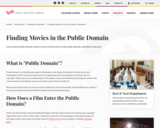
Introduction to Geology students are asked to write a two page (5-6 paragraph) editorial that addresses what geology is and why it is important to society. To gather the information for their editorial, students have to interview at least five individuals (two of whom have to be professionals or faculty members), and consult the mission statements and goals of professional geology organizations (i.e. AAPG, AGU, GSA, SEPM, etc.) Students then synthesize their research and construct a well-written editorial with appropriate citations that will either explain, persuade, criticize, or praise. In completing the assignment, students not only better understand why it is good to study geology, but also have an appreciation for the scope and content of an Intro to Geology course.
Teaching Tips
Adaptations that allow this activity to be successful in an online
environment
I have not used this activity in an online environment, although students in my face-to-face class submit their assignment online through learning management software (i.e. BlackBoard, Desire2Learn, etc.).
Elements of this activity that are most effective
This is effective because it requires that students become active in the learning process, and although the writing is minimal, they have to really pay attention to their wording, point of view, and purpose. Moreover, when students interview professionals, other faculty, their parents, or friends, they are often engaged in interesting conversations that provide important insights. I have found that this helps motivate students and excites them about the content of the course.
Recommendations for other faculty adapting this activity to their
own course:
I recommend that other faculty use the content of the editorials periodically by referring back to student responses throughout the duration of their courses. It helps draw students back into the course, and helps connect them to why they are studying geology in the first place. In years when written work are less than satisfactory, I often require students to swap editorials and provide peer critiques. This usually helps students who struggle with their writing.
(Note: this resource was added to OER Commons as part of a batch upload of over 2,200 records. If you notice an issue with the quality of the metadata, please let us know by using the 'report' button and we will flag it for consideration.)
- Subject:
- Biology
- Life Science
- Material Type:
- Activity/Lab
- Homework/Assignment
- Provider:
- Science Education Resource Center (SERC) at Carleton College
- Provider Set:
- Teach the Earth
- Date Added:
- 03/27/2020

